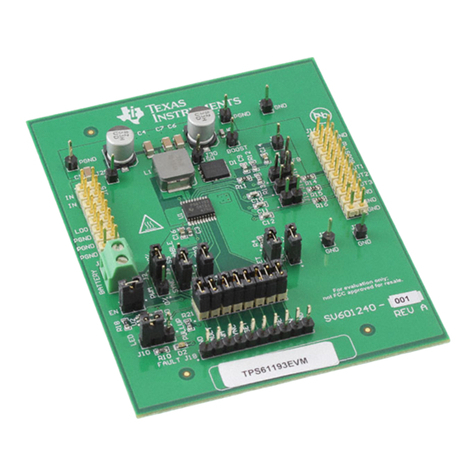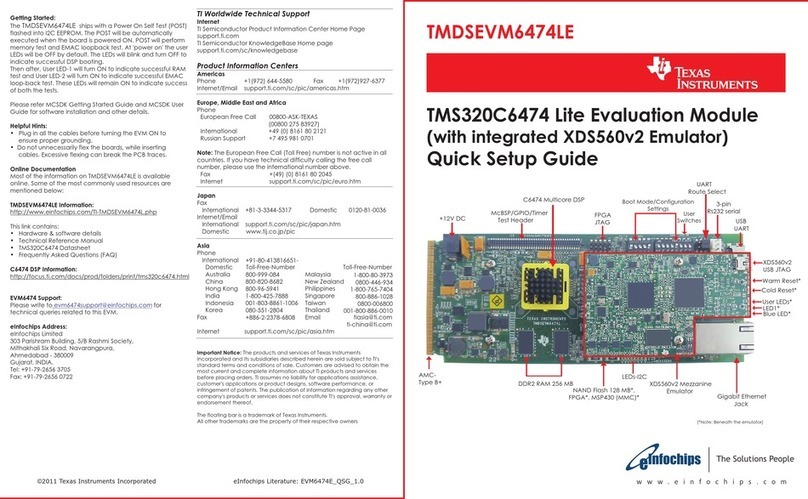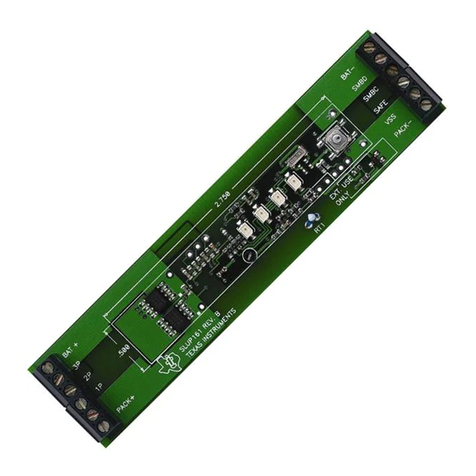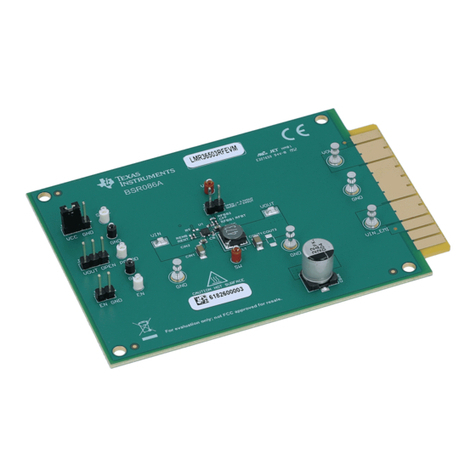Texas Instruments TAS6422-Q1 User manual
Other Texas Instruments Motherboard manuals

Texas Instruments
Texas Instruments ADS1610EVM User manual
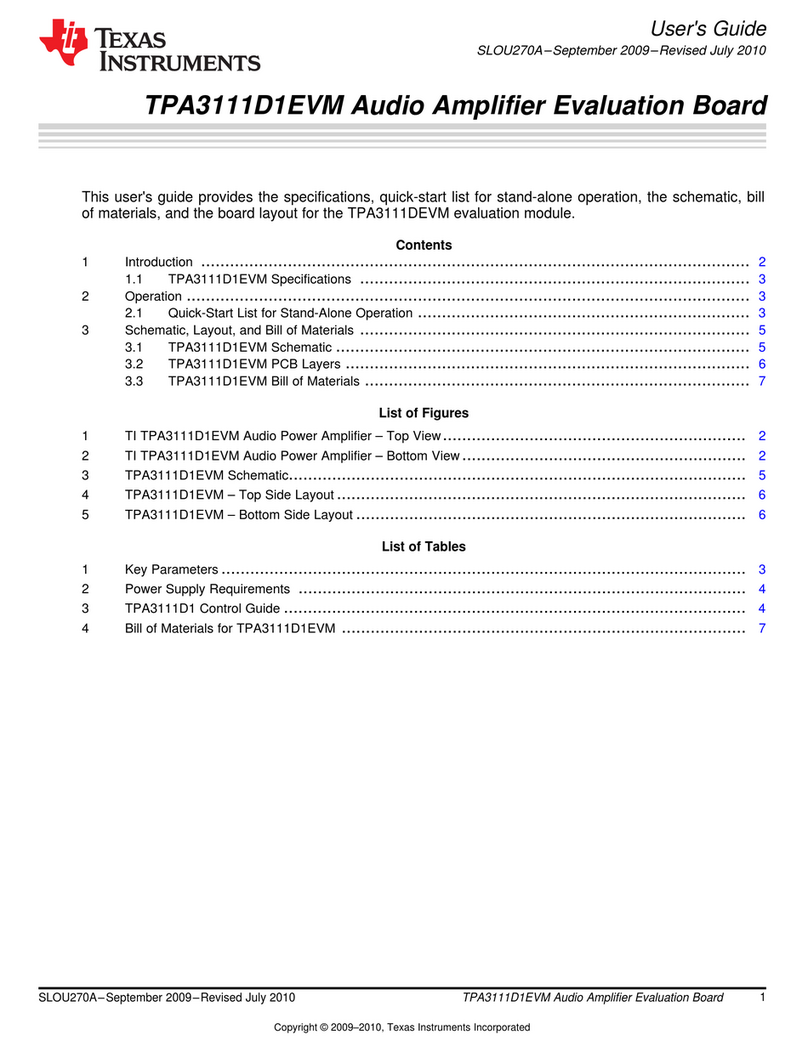
Texas Instruments
Texas Instruments TPA3111D1EVM User manual
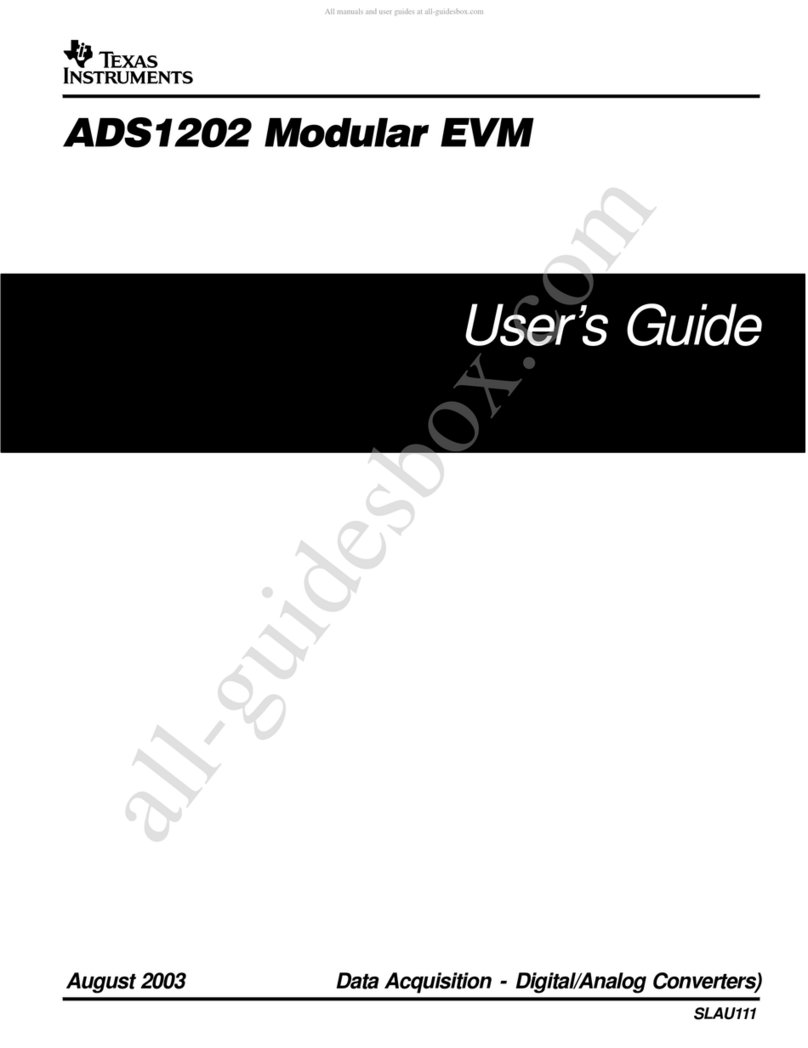
Texas Instruments
Texas Instruments ADS1202EVM User manual

Texas Instruments
Texas Instruments LM2695EVAL User manual
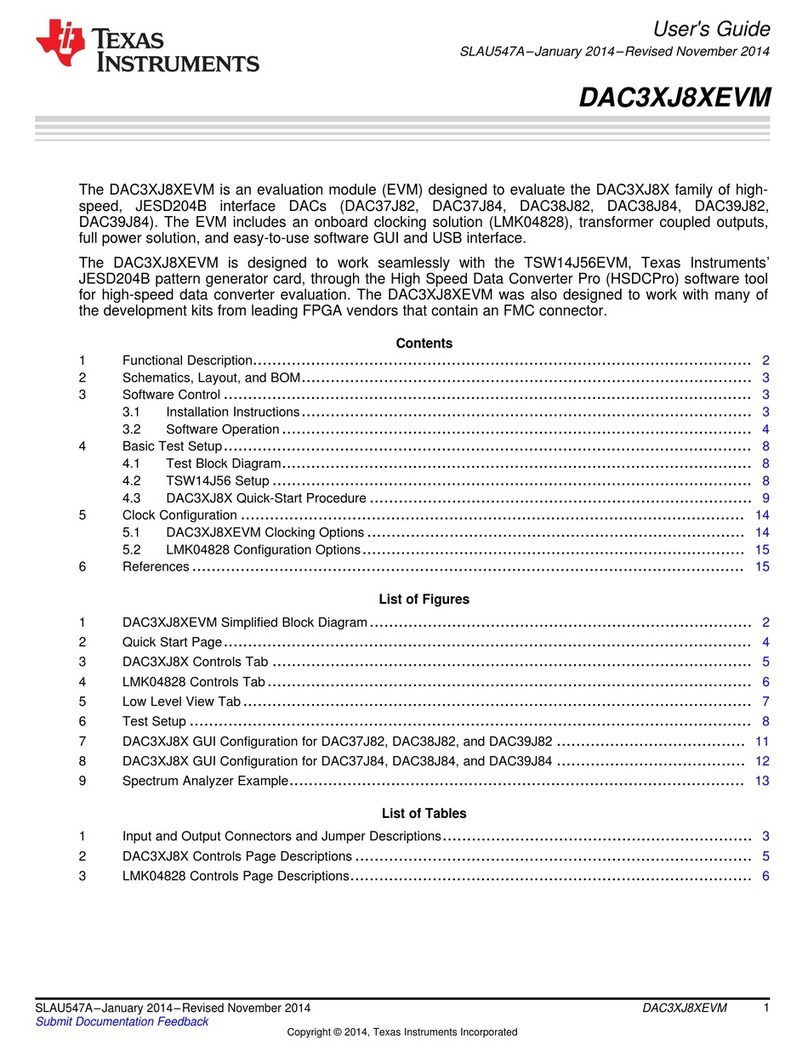
Texas Instruments
Texas Instruments DAC3XJ8XEVM User manual

Texas Instruments
Texas Instruments TPS25980EVM User manual

Texas Instruments
Texas Instruments ADS1299EEG-FE User manual
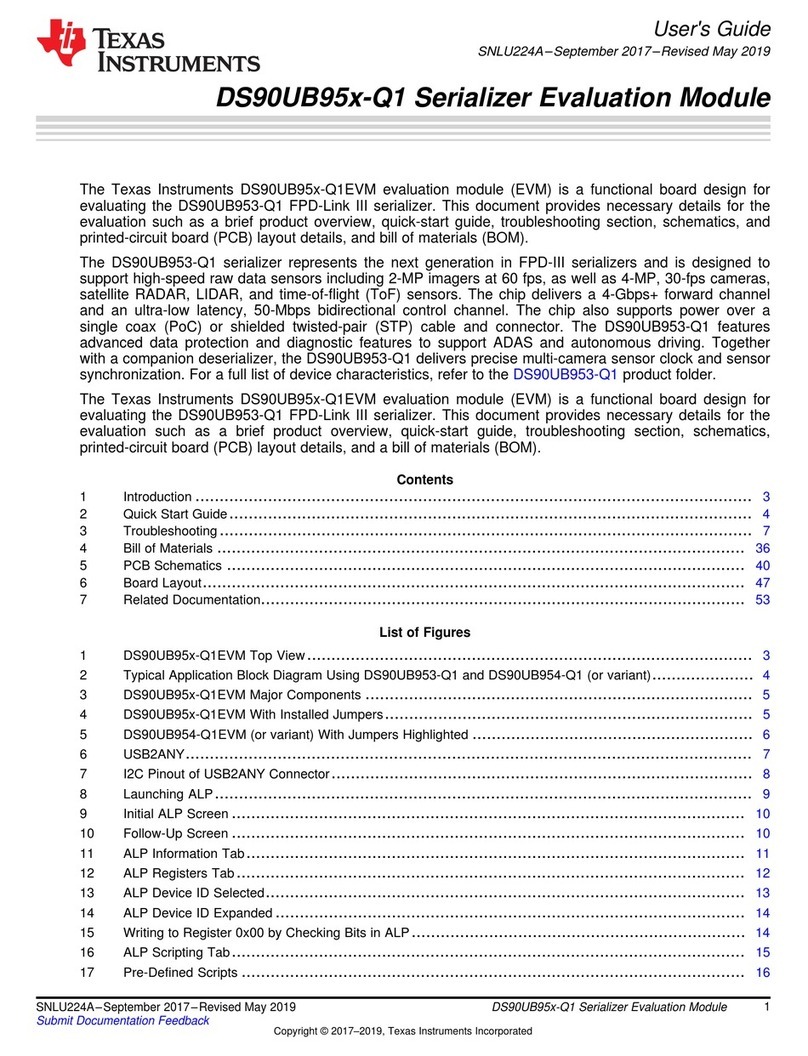
Texas Instruments
Texas Instruments DS90UB95 Q1 Series User manual
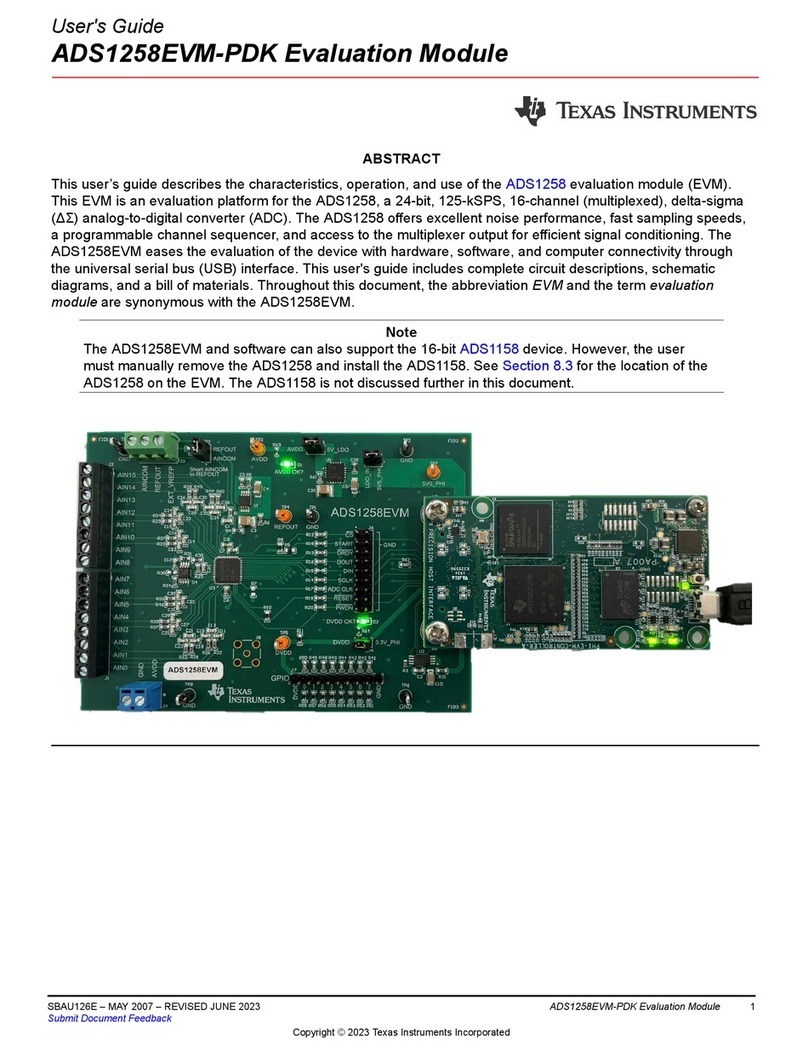
Texas Instruments
Texas Instruments ADS1258EVM-PDK User manual

Texas Instruments
Texas Instruments OMAP35x User manual
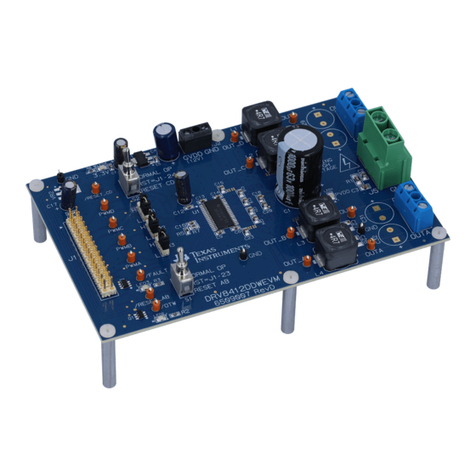
Texas Instruments
Texas Instruments DRV84 EVM Series User manual

Texas Instruments
Texas Instruments DLP LightCrafter 4500 Operating instructions
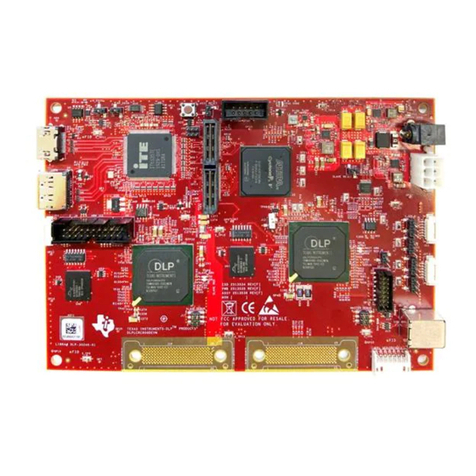
Texas Instruments
Texas Instruments DLP LightCrafter Dual DLPC900 Manual
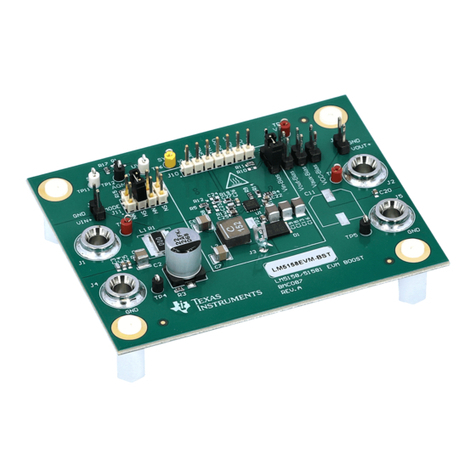
Texas Instruments
Texas Instruments LM5158EVM-BST User manual
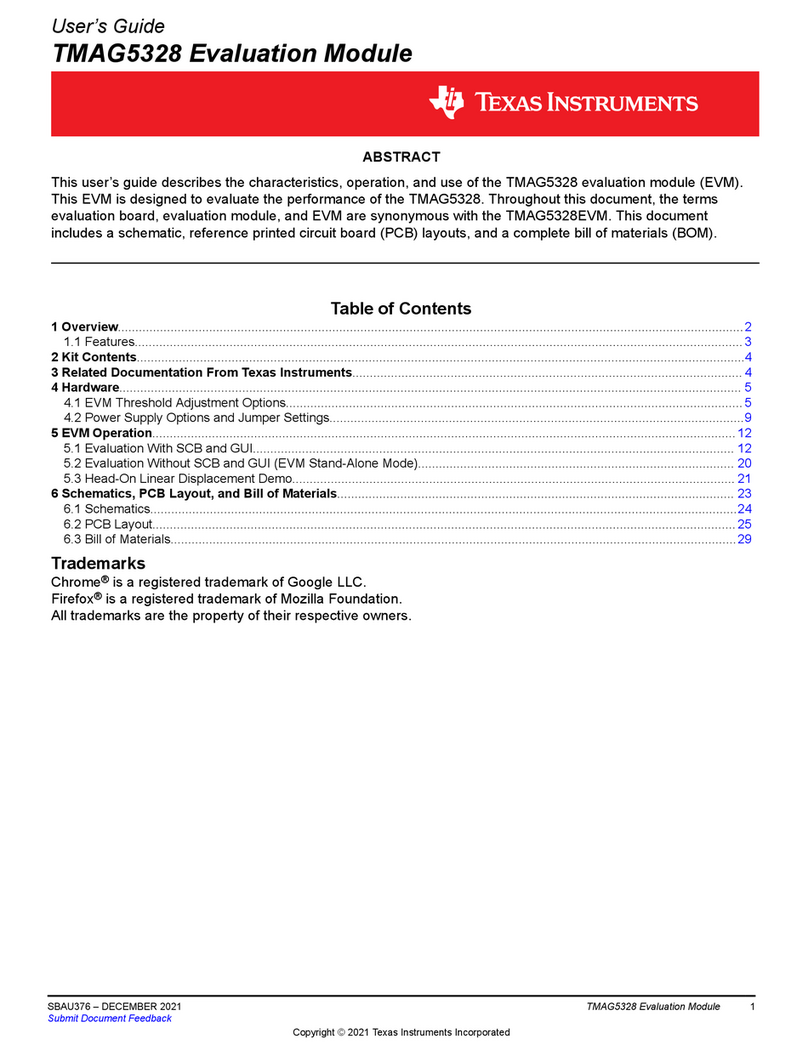
Texas Instruments
Texas Instruments TMAG5328 User manual

Texas Instruments
Texas Instruments TPS650830EVM-095 User manual
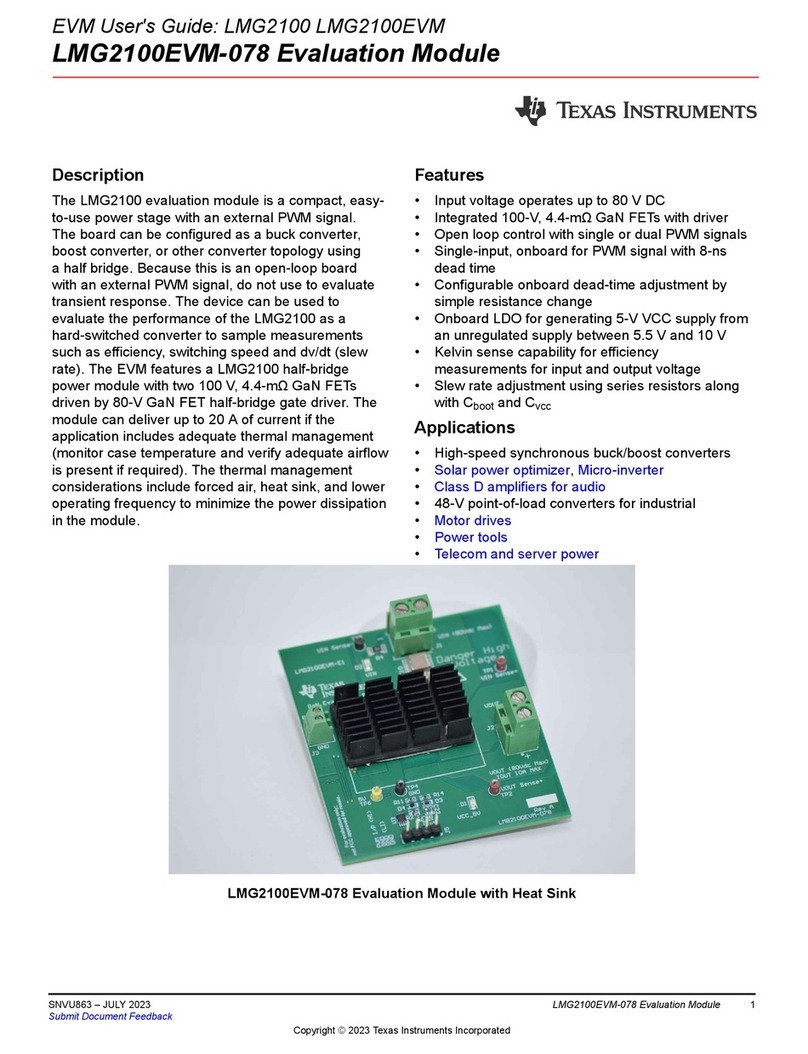
Texas Instruments
Texas Instruments LMG2100 User manual
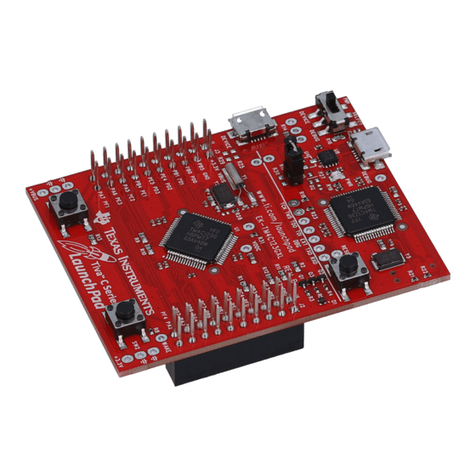
Texas Instruments
Texas Instruments Tiva TM4C123G User manual
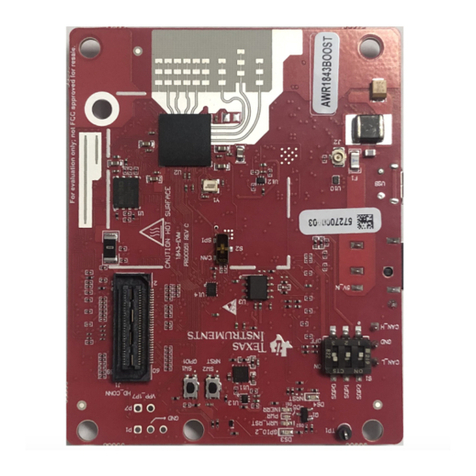
Texas Instruments
Texas Instruments WR1843 Series User manual
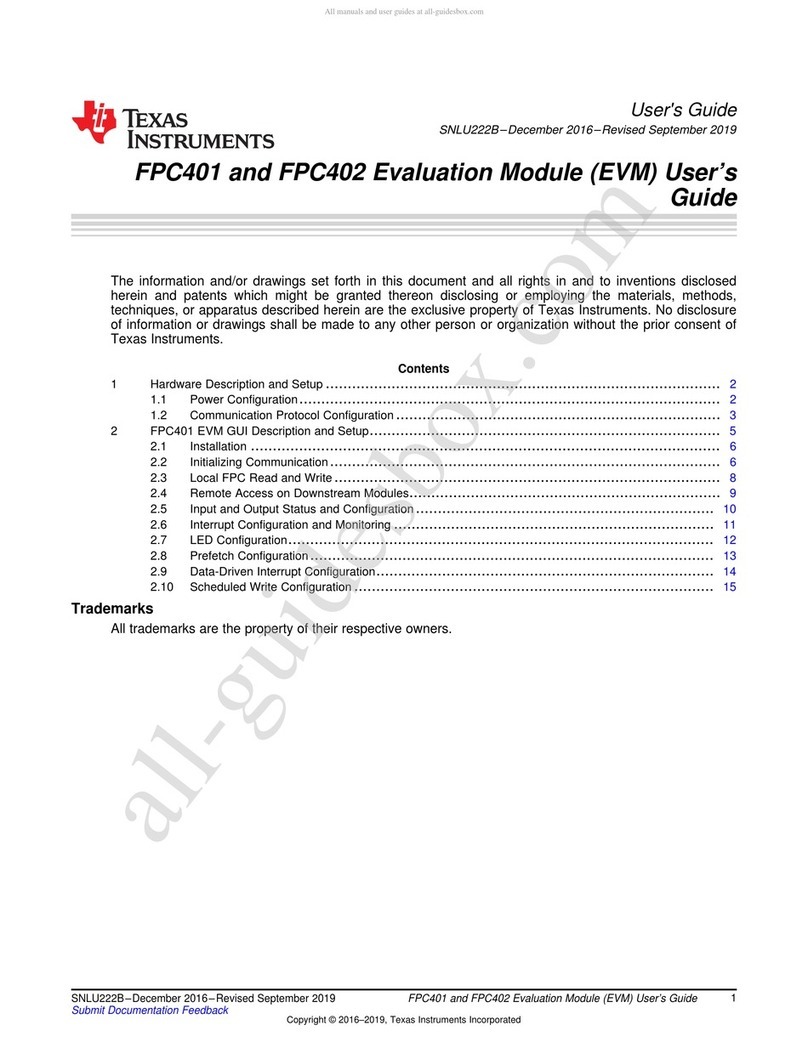
Texas Instruments
Texas Instruments FPC401EVM User manual
